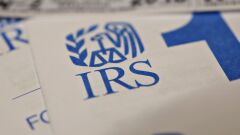Much has been publicized about the IRS pausing some of its compliance and collection notices in 2022. Specifically, the IRS announced that it would suppress many balance-due reminder notices until the IRS caught up on processing paper returns, correspondence, and other backlogged items.
But tax professionals and their clients shouldn’t get too comfortable. The IRS can’t suppress about 9 million notices that go out every year. These notices are the first balance-due notice in a series of collection notices. In IRS terms, this notice is called the CP14 notice and demand for tax.
The CP14 notice is required by law (Internal Revenue Code Section 6303) to be issued within 60 days after the IRS assesses the tax. The bulk of CP14 notices show up in the beginning of June (for 2021 returns, this date was likely June 6, 2022), asking for payment within 21 days.
This notice and demand letter sets the stage for the IRS to enforce collection. If the taxpayer doesn’t respond to the CP14 notice with payment, the IRS can begin the process to collect the taxes by levy or by filing a notice of federal tax lien. Usually, the IRS will send a series of reminder notices, called the collection notice stream, to ask for payment before starting enforced collection.
What should you do if your client gets a CP14 notice?
First, don’t ignore it. It is time to start planning with your client on how to resolve the outstanding tax balance. There are five IRS options to consider, and they each have pros and cons. Your client’s circumstances will determine which option is best.












